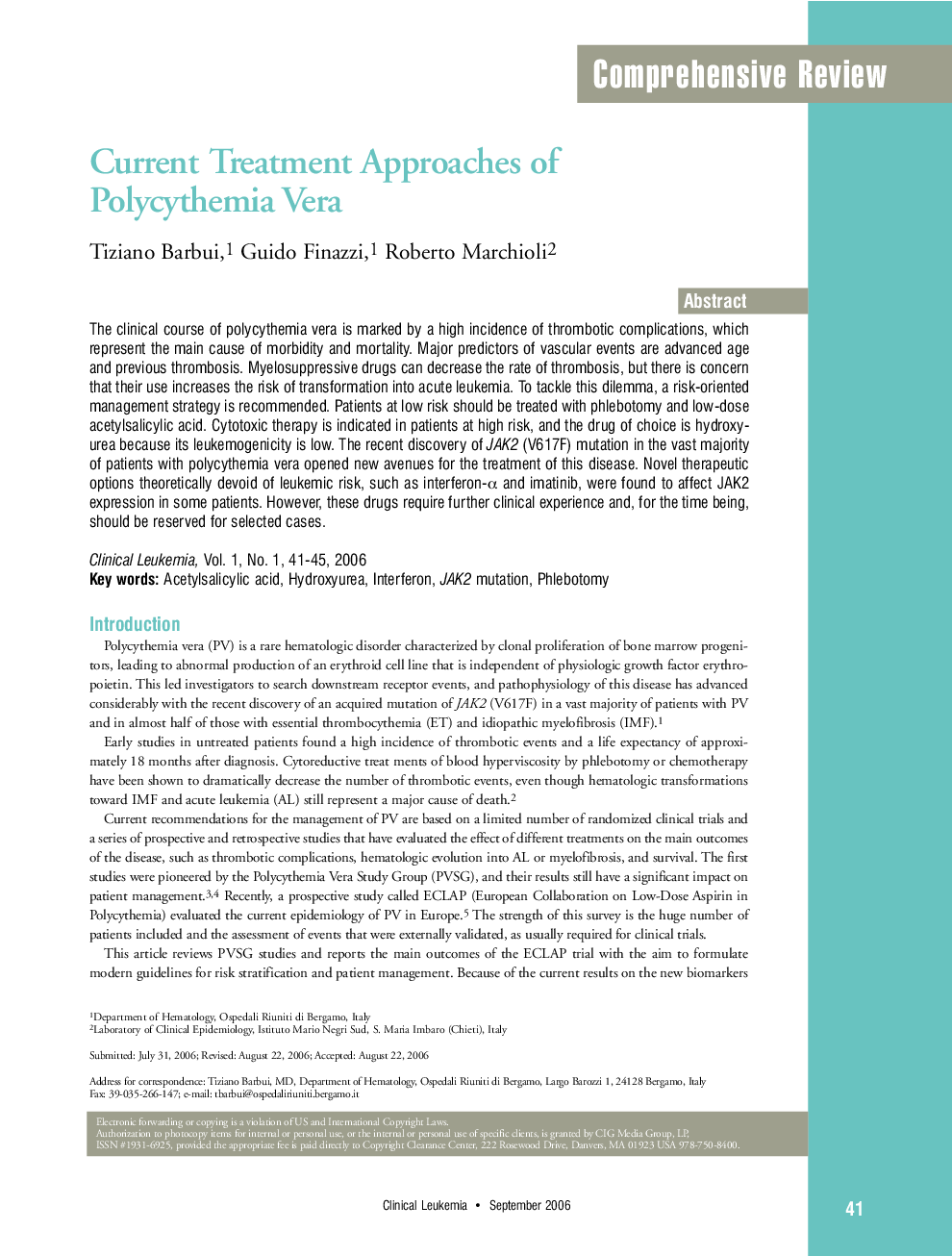| کد مقاله | کد نشریه | سال انتشار | مقاله انگلیسی | نسخه تمام متن |
|---|---|---|---|---|
| 3981081 | 1257652 | 2006 | 5 صفحه PDF | دانلود رایگان |

The clinical course of polycythemia vera is marked by a high incidence of thrombotic complications, which represent the main cause of morbidity and mortality. Major predictors of vascular events are advanced age and previous thrombosis. Myelosuppressive drugs can decrease the rate of thrombosis, but there is concern that their use increases the risk of transformation into acute leukemia. To tackle this dilemma, a risk-oriented management strategy is recommended. Patients at low risk should be treated with phlebotomy and low-dose acetylsalicylic acid. Cytotoxic therapy is indicated in patients at high risk, and the drug of choice is hydroxyurea because its leukemogenicity is low. The recent discovery of JAK2 (V617F) mutation in the vast majority of patients with polycythemia vera opened new avenues for the treatment of this disease. Novel therapeutic options theoretically devoid of leukemic risk, such as interferon-α and imatinib, were found to affect JAK2 expression in some patients. However, these drugs require further clinical experience and, for the time being, should be reserved for selected cases.
Journal: Clinical Leukemia - Volume 1, Issue 1, September 2006, Pages 41-45